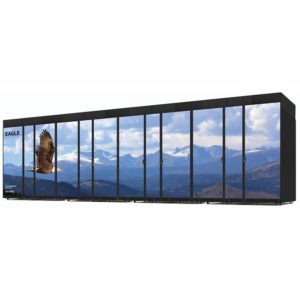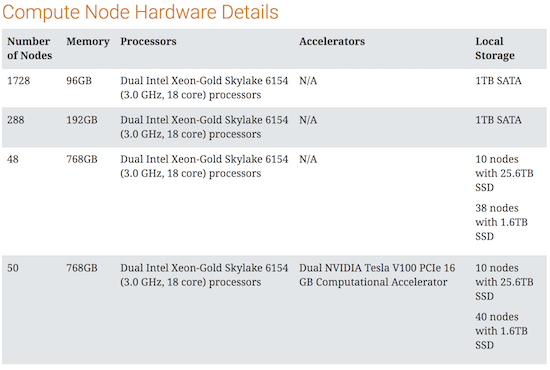 Today HPE announced it is building a new supercomputer for the National Renewable Energy Laboratory (NREL) that is more energy efficient and 3.5 times more powerful than its existing system. The new development is part of a long-standing collaboration between HPE and the U.S. Department of Energy.
Today HPE announced it is building a new supercomputer for the National Renewable Energy Laboratory (NREL) that is more energy efficient and 3.5 times more powerful than its existing system. The new development is part of a long-standing collaboration between HPE and the U.S. Department of Energy.
The new, fast-performing system, which NREL has named Eagle, will run more detailed models that simulate complex processes, systems, and phenomena to advance early research and development on energy technologies across fields including vehicle, wind power, and data sciences.
We are strongly committed to architecting technologies to power the next wave of supercomputing and are creating advanced HPC systems while scaling energy efficiency in data centers, to get us there,” said Bill Mannel, vice president and general manager, HPC and AI Group, HPE. “Through Eagle and our overall ongoing collaboration with the U.S. DOE and NREL, we are advancing research to bolster innovation in energy and sustainability.”
Eagle is configured to run compute-intensive and parallel computing jobs. It is a cluster comprised of 2114 nodes (servers) that run the Linux operating system (Red Had Linux or the derivative CentOS distribution), with a peak performance of 8 PetaFLOPS. The nodes are connected to each other and to storage by a high-speed 100Gb/s EDR InfiniBand network. All nodes and storage are connected using an enhanced 8-dimensional hypercube topology that provides a bisection bandwidth of 26.4 terabytes/s. Eagle has NFS file systems for home directories and application software as well as a 14 petabyte high-speed Lustre file system for parallel I/O.
As computing advances and supercomputers increasingly adopt scalable performance, the industry will continue to combat energy consumption to lower operating costs and pollution levels. HPE is committed to designing innovative energy-efficient solutions for next-generation high performance computing technologies. Through collaborative efforts with NREL, from an initiative to enable data centers with hydrogen fuel cell to the new Eagle system, HPE is powering smarter, energy-conscious data center environments.
 With Eagle, the world’s largest HPC system dedicated to advancing renewable energy and energy efficiency technologies, HPE is supporting NREL’s ongoing mission to significantly improve energy consumption and widen its sustainability practices. Eagle is powered by the HPE SGI 8600, a system designed from the ground up to run complex HPC workloads at petaflop speeds. Additionally, with the HPE SGI 8600, Eagle is gaining a warm liquid cooling system that captures 97 percent of wasted heat to reuse² in other areas of its hosted facility like surrounding office space and labs.
With Eagle, the world’s largest HPC system dedicated to advancing renewable energy and energy efficiency technologies, HPE is supporting NREL’s ongoing mission to significantly improve energy consumption and widen its sustainability practices. Eagle is powered by the HPE SGI 8600, a system designed from the ground up to run complex HPC workloads at petaflop speeds. Additionally, with the HPE SGI 8600, Eagle is gaining a warm liquid cooling system that captures 97 percent of wasted heat to reuse² in other areas of its hosted facility like surrounding office space and labs.
HPE is enabling Eagle with a fully integrated, turn-key system that includes advanced next-generation compute, network and storage capabilities. The system runs on the Intel Xeon Scalable processors, uses Mellanox EDR InfiniBand fabric and comprises a total of 76,104 compute cores, each with 96, 192, or 768 gigabytes of memory to deliver peak performance of 8 petaflops.

With Eagle, we are gaining significant compute power to boost scientific discovery efforts and support our mission in advancing innovation in energy technologies,” said Steve Hammond, director of NREL’s Computational Science Center. “By collaborating with HPE, we are gaining better tools to improve simulation and modeling across complex events to unlock new insights.”
Eagle will be installed in NREL’s Energy System Integration Facility (ESIF) data center this summer and put into production use in January 2019.




